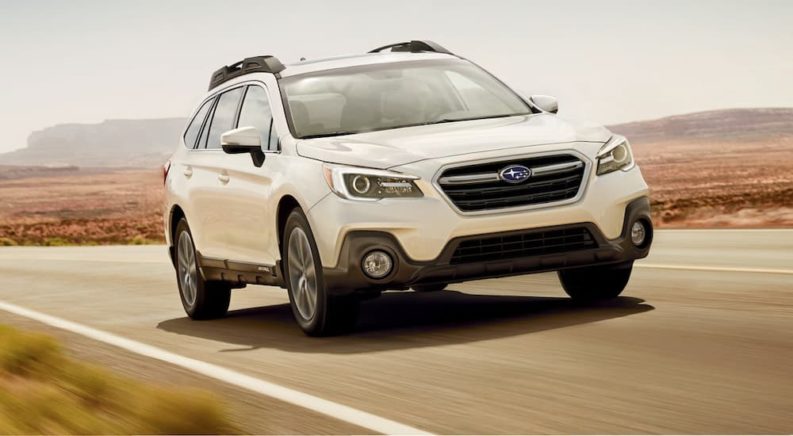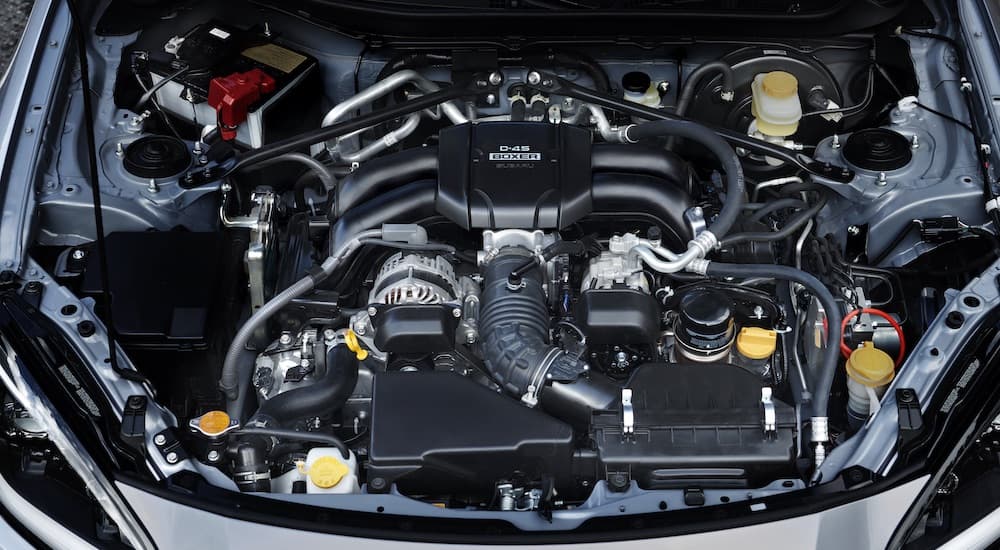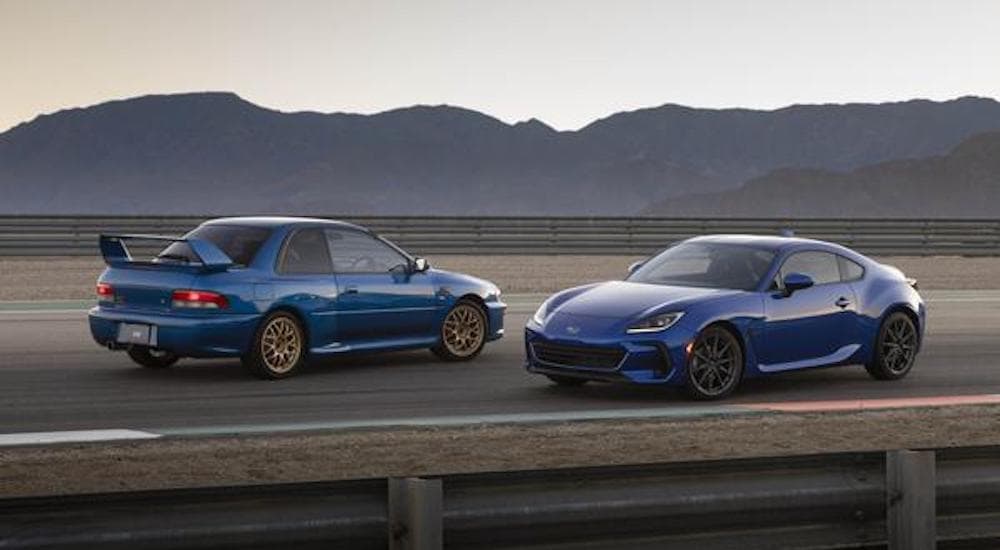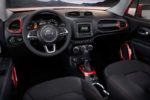Americans are passionate about their vehicles, with some of the grandest rivalries slating Chevrolet loyalists against Ford fans. However, many drivers are arguably in on a secret that the rest of America has yet to discover or continues to ignore. It’s the power of the boxer engine and its predominant role in the capability of models like the used Subaru Outback.
So, what makes the boxer engine one of the industry’s not-so-hidden gems? How does it manage to fit in with the pragmatic Subaru lineup and the speed-hungry and luxurious Porsche fleet? How does Subaru enhance the boxer engine’s capability with its Symmetrical All-Wheel Drive system? Answering these questions starts with an age-old practice of bucking tradition and going against the grain to deliver more power and capability at a time when automobiles were still relatively new.
Going Against the Grain: The Contra Engine
The basic machinations of every internal combustion engine are the same. However, how these components are designed and configured dramatically impacts a vehicle’s performance and capability. For example, a V8 engine gets its name from the V-shape of its cylinders, whereas the boxer engine gets its name from how its horizontally opposed cylinders lay flat.
While Subaru and Porsche are renowned for using the boxer engine, the automakers can’t take credit for inventing the design. Instead, that credit belongs to German inventor Karl Benz. While automobiles were a rarity in Germany in the late 1890s, Benz dedicated a team to developing a multi-cylinder engine that would compete against rival manufacturers. His first twin-engine design debuted in 1897, forever changing the automotive industry.
After two years of fine tuning the engine, Benz debuted the boxer or “contra” engine in 1899 on the Mercedes-Benz Dos-à-Dos. The engine produced five horsepower and earned widespread praise for its smooth handling and capability. Before long, the boxer gained a prominent spot in the Mercedes-Benz lineup and later inspired Volkswagen to add a 1.1L boxer engine to its Type 1 Beetle. Coincidentally, BMW adopted the boxer engine for its motorcycle lineup, a feature that distinguishes BMW bikes even today.
As the boxer engine continuously evolved and steadily delivered more power, it was picked up by automakers like Porsche. Ferry Porsche outfitted his 356-01 with a 35-horsepower four-cylinder boxer. Subaru was soon to follow, debuting the FF-1 with its 61-horsepower boxer engine. Subaru hasn’t looked back since, outfitting every vehicle in its fleet with the reliable, responsive, and capable powerplant.
How It’s Different: Boxer-Like Mechanics
Internal combustion engines may all operate the same, but how you align their cylinders and how the components work together dramatically impact the engine’s performance and capability. Rather than aligning the cylinders in a V shape like a standard V6 or V8 engine, a boxer engine takes a different approach and positions the cylinders on each side of the rotating crankshaft. This flat layout allows the opposing pistons to move inward and outward simultaneously, mimicking the one-two punch of a boxer in the ring. This counterbalance has more advantages than you might imagine.
The horizontally opposed layout gives the boxer engine several advantages over other internal combustion engines with a V-like or I-like design. By positioning the cylinders horizontally, the boxer engine reduces its size and evenly distributes its weight. Its compactness also reduces its efforts, especially since the force of the piston is directly transferred to the crankshaft, gearbox, and wheels. This direct transfer means fewer transmission components and less work for the engine, ultimately increasing power and reducing fuel consumption.
The boxer engine’s compact design also allows automakers like Subaru to position the engine lower in the vehicle. As a result, the weight is evenly distributed as the components move, which translates to more predictive handling. In addition, its lower center of gravity enhances stability, especially when cornering, traveling at high speeds, or navigating technical terrain. With all of these tasks within the wheelhouse of a popular adventurer like the Subaru Outback, it’s easy to see why the boxer engine is a significant selling point for Subaru’s top seller.
A Dynamic Duo: The Boxer Engine and Symmetrical All-Wheel Drive
The boxer engine gives every Subaru a lower center of gravity, dramatically improving stability. However, Subaru takes this stability to the next level with its Symmetrical All-Wheel Drive and Vehicle Dynamics Control systems. The combination makes Subarus, like the Outback, capable of handling slippery or technical terrain, engaging to drive, and incredibly safe.
Subaru’s Symmetrical All-Wheel Drive system comprises the all-wheel drive drivetrain and the boxer engine. The boxer’s compact design and evenly distributed weight allow Subaru to mount the entire system in a straight, symmetrical line lower in the vehicle. This positioning generates an even better weight balance, directly impacting traction, stability, and control. For instance, the lower position and balanced weight reduce the roll and pitch of the chassis when cornering or braking.
The Symmetrical All-Wheel Drive system contributes to this stability by distributing an even amount of power to the wheels for neutral handling. Today, most all-wheel drive systems are usually modified front-wheel drive systems with a few extra parts that allow them to meet the basic criteria of all-wheel drive capability. In contrast, Subaru’s Symmetrical All-Wheel Drive system is the real deal.
So, what does this mean in a real-life situation? When navigating rainy conditions, one wheel may lose traction in the corner. However, you won’t feel this loss because Subaru’s Symmetrical All-Wheel Drive system compensates by providing the necessary traction to maintain control of the vehicle. As a result, the constant distribution of power minimizes wheel slip before you ever notice, a dramatic difference from mediocre rivals that don’t evenly distribute power.
While the Symmetrical All-Wheel Drive system constantly balances power distribution to the wheels, Subaru’s Vehicle Dynamics Control system monitors your steering and braking. This additional input helps you keep the Subaru on its path, while other features like the anti-lock brakes and Electronic Brake-Force Distribution (EBD) work behind the scenes based on the situation. For example, the EBD evaluates the Subaru’s traveling weight (including passengers and cargo) and adjusts the distribution of braking force between the front and rear wheels for enhanced stopping power.
The Match Continues
While professional boxers typically go for 12 rounds, the boxer engine proves it has no limits. Around since the late 1890s, the legendary boxer engine is now a staple in the Subaru lineup and a go-to for the Porsche fleet. The incredible diversity between the Subaru and Porsche lineups speaks volumes about the boxer engine’s versatility, capability, and practicality.
You’ll also find this versatility in the Subaru lineup, especially with adventurers like the Outback and sports cars like the WRX running off the boxer engine. In the Outback, the boxer engine delivers the power necessary for a capable on and off-road adventurer. In the WRX, the engine pairs exceptionally well with the Symmetrical All-Wheel Drive system that gives drivers the confidence to push the WRX’s 271-horsepower engine to its limits.
This wide range of power makes the boxer engine incredibly diverse. It’s also a key component of Subaru’s branding and reputation. Subaru’s prominent use of the boxer engine is rooted in the automaker’s ongoing efforts to build safer and more innovative vehicles. Today, Subaru accomplishes as much by pairing the boxer engine with its Symmetrical All-Wheel Drive system that increases stability with its lower center of gravity and delivers incredible handling. As a result, models like the Outback, Forester, Crosstrek, WRX, and many others run on the boxer engine, earning each model a stellar reputation as capable adventurers in any condition and Subaru a coveted place as one of the most reliable brands in the industry.






